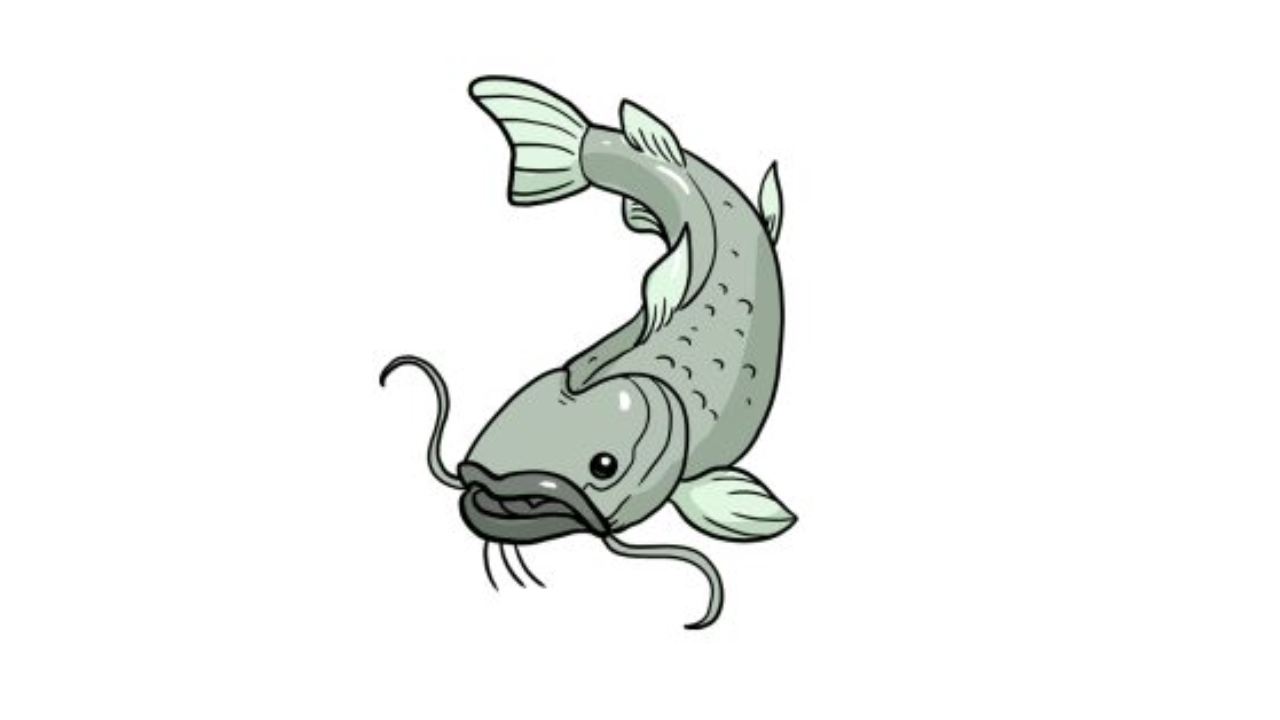Introduction:
Draw A Catfish: Drawing is an innovative and remunerating action that permits us to communicate our creative mind and catch the excellence of our general surroundings. In the event that you’re hoping to upgrade your imaginative abilities and make a dazzling portrayal of an oceanic animal, why not take a shot at drawing a catfish? Known for their novel appearance and unmistakable highlights, catfish can make for an intriguing and testing subject for your craftsmanship. In this bit by bit guide, we will walk you through the most common way of drawing a catfish, from fundamental shapes to complicated subtleties, assisting you with rejuvenating this captivating fish on paper.
Also, check out our Turkey coloring pages free.
Materials You’ll Need
Before plunging into the drawing system, ensure you have every one of the fundamental materials available. Here is a rundown of what you’ll require:
Drawing Paper: Pick a quality paper that can deal with different drawing strategies, like pencil, ink, and concealing.
Pencils: Gather a scope of pencils with various hardness levels (HB, 2B, 4B, and so on) to accomplish different tones in your drawing.
Eraser: A delicate eraser is fundamental for revising mix-ups and refining your drawing.
Fine-tip Pens: These will be valuable for illustrating and adding multifaceted subtleties.
Reference Picture: Find a reasonable and itemized reference picture of a catfish to direct you through the drawing system.
Stage 1: Essential Shapes and Rules
Start by delicately portraying the fundamental shapes that will act as the establishment for your catfish drawing. Begin with an oval shape for the body, trailed by a somewhat lengthened triangle for the head. These shapes will assist you with laying out the general extents of the catfish.
Then, define an even boundary across the body’s middle. This line will go about as a rule for putting the blades and guaranteeing evenness.
Stage 2: Blueprint the Body and Head
Utilizing a somewhat hazier pencil, begin framing the body and top of the catfish. Focus on the forms of the fish’s body, which is frequently smoothed out and stretched. Utilize smooth, streaming lines to associate the oval body shape to the three-sided head.
Stage 3: Add Facial Highlights
Catfish are known for their noticeable facial elements, including their barbels (stubble like extremities) and wide mouths. Put the eyes on each side of the head, close to the top. Add the mouth by drawing a wide, bended line that reaches out from one side of the head to the next. To make a reasonable impact, sketch the barbels reaching out from the sides of the mouth.
Stage 4: Draw the Balances
Catfish have different balances that add to their particular appearance. Begin by drawing the dorsal balance, which runs along the highest point of the catfish’s back. Expand the line you drew before as a rule to decide the length and position of the dorsal balance.
Then, draw the pectoral balances, which are situated on the sides of the fish’s body. These blades look like bended triangles and assist the catfish with keeping up with its equilibrium. The butt-centric balance, situated on the underside of the fish, can be defined as a delicately bended boundary.
Remember the fat blade, a little, plump balance situated between the dorsal blade and the tail. It’s a trademark element of numerous catfish species.
Stage 5: Tail and Extra Subtleties
Continue on to drawing the tail balance. Catfish tails can change in shape, from forked to adjusted. Concentrate on your reference picture to portray the tail’s shape and size precisely. Utilize streaming lines to associate the tail blade to the body.
Presently, refine your drawing by adding the scale design on the catfish’s body. Draw little, covering bends to address the scales. Center around the region around the head and chest area, as well as the part close to the tail.
Stage 6: Settle the Blueprint
With the fundamental design and highlights set up, utilize a fine-tip pen to follow over the pencil lines you need to keep in your last drawing. This will give your drawing a perfect and characterized appearance.
Stage 7: Concealing and Finishing
Concealing is vital for adding profundity and aspect to your drawing. Utilize your pencils to conceal the different pieces of the catfish tenderly. Obscure the regions that would be in shadow, like under the body and blades. Utilize lighter strokes for the areas that get all the more light. This concealing procedure will cause your attracting to show up more three-layered.
To make a finished look on the fish’s body, utilize a cross-bring forth strategy. This includes defining crossing boundaries every which way to copy the surface of fish scales. Apply this method specifically to regions where you need to underscore the scales.
Stage 8: Final details
Make a stride back and survey your drawing. Are there any areas that need further refinement? Are the extents and subtleties precise? Make any fundamental changes at this stage.
In the event that you’re happy with your drawing, you can add an unpretentious foundation to finish the piece. This could be a basic submerged scene or sea-going plants that supplement the catfish’s territory.
Your Catfish Drawing is Finished!
You worked effectively working on this aide on the most proficient method to draw a catfish! There were a troublesome and interesting subtleties to conquer here, so you ought to be glad for making such an incredible drawing. Since you have finished this drawing of a catfish, you can move the tomfoolery along by adding your own options and thoughts to polish it off.
Along these lines, you can make something totally exceptional from what we spread out in the aide. It’s dependably enjoyable to perceive how various individuals decipher a similar plan! In view of that, we would urge you to share your got done with drawing on our Facebook and Pinterest pages. This is the most ideal way to flaunt your marvelous work of art, and we couldn’t imagine anything better than to perceive how it ended up.
End:
Drawing a catfish requires cautious perception of its remarkable highlights and a consistent hand to catch its many-sided subtleties. With training and persistence, you can make a staggering portrayal of this interesting oceanic animal. Recollect that each craftsman has their style, so feel free to with various methods and approaches. Whether you’re a novice or an accomplished craftsman, the method involved with rejuvenating a catfish on paper is a fulfilling and instructive excursion into the universe of workmanship.
For more information, please Click Here!





